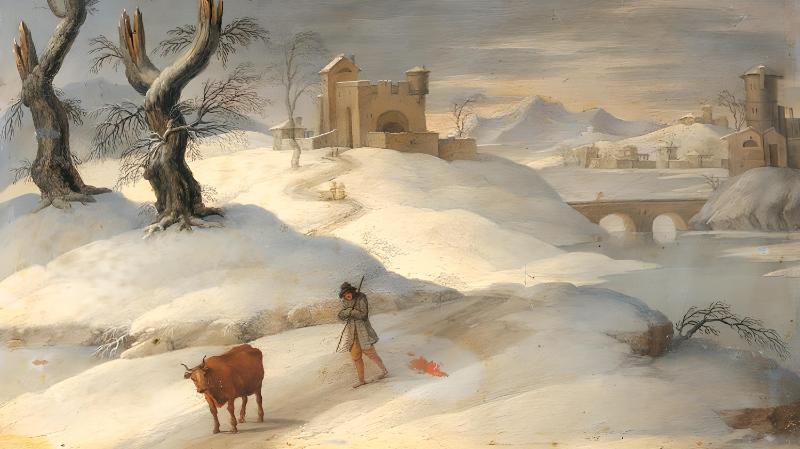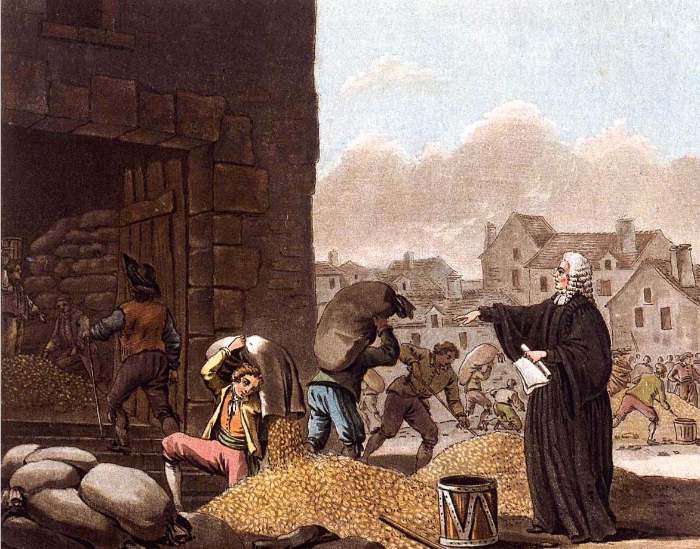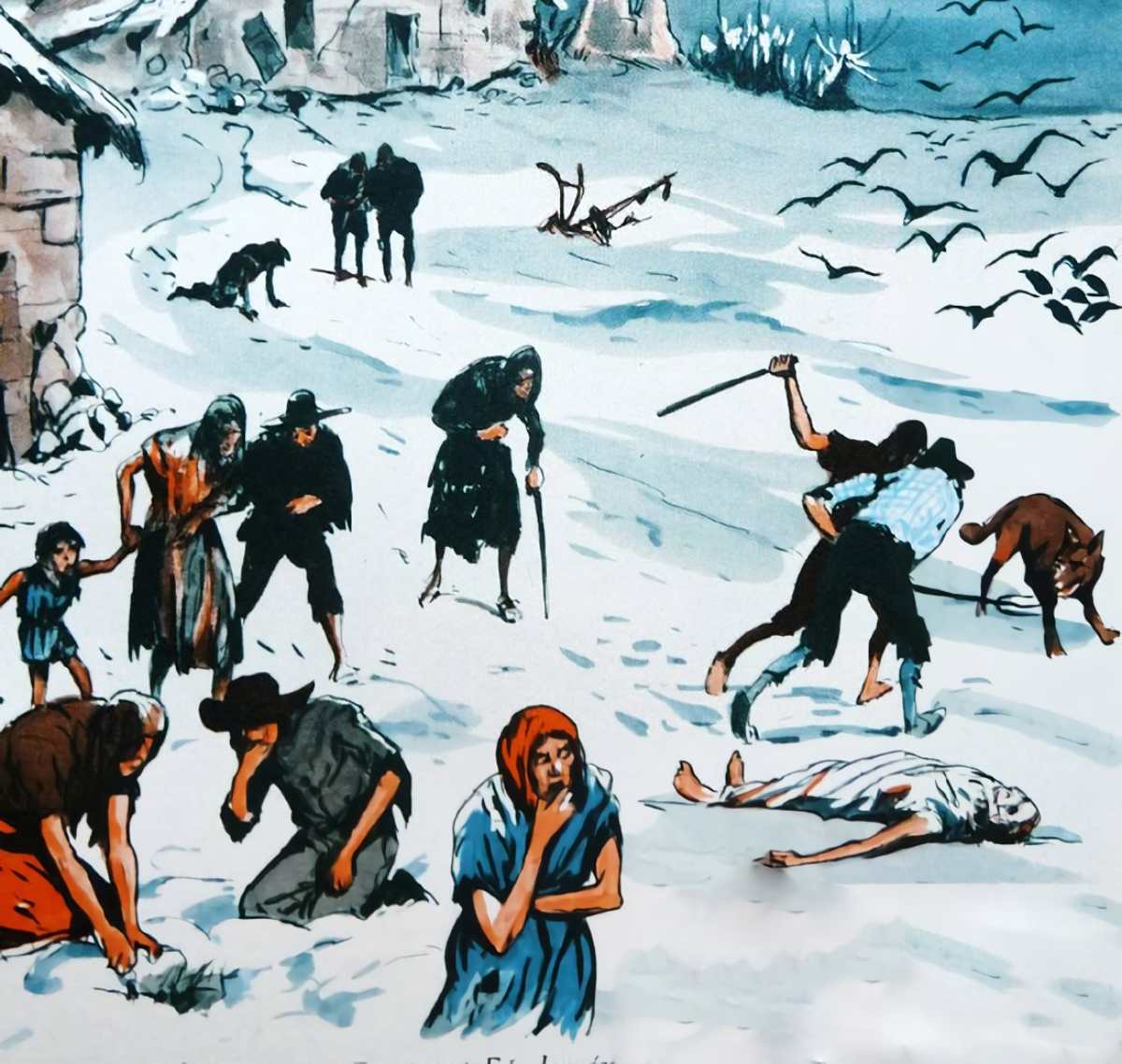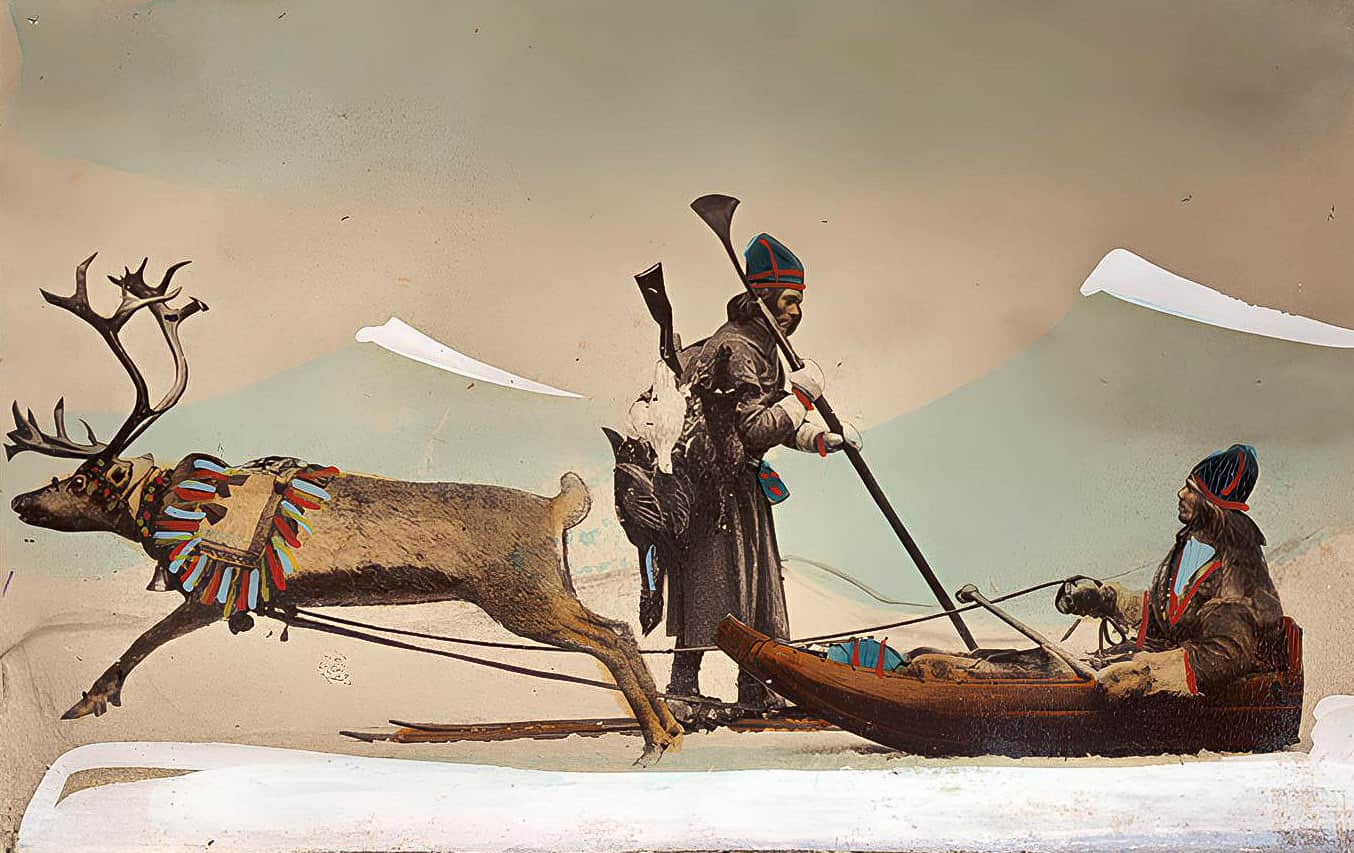There are occasions when Europe is visited by “Siberian air,” as was the case during the reign of Louis XIV in France in 1709. But it was not just France. Everything froze over, from Scandinavia to Italy, and Russia. But France was particularly hard hit by this 1709 winter. This event is known to the French to this day as the “Great Winter,” the coldest winter in the previous 500 years, which lasted from the end of 1708 to the spring of 1710. According to Voltaire, this “cruel winter of 1709 concluded the despair of the nation.” France had been fighting on the side of Spain since the year 1701. This alliance was incredibly costly, both financially and through the sacrifices that people made. Therefore, just a bad winter would be enough to deal the ultimate blow to the country.
During the Winter of 1709, There Was an Extreme Cold Wave
In Russia, it had become so cold in the fall of 1708 that they migrated by the thousands to the southwest. But here, too, they found too little food. This was because one of the most terrible natural disasters of all time ravaged Europe in the winter 300 years ago: the “Great Frost of 1709.”
People suffered the frostiest phase of the past 10,000 years, and many died. Even in Portugal, rivers froze and palm trees sank in the snow. Throughout Europe, frozen fish floated in the water, deer lay dead in the meadows, livestock froze to death in the stables, and birds fell to the ground like stones.

Between 1645 and 1715, the sun’s rays were particularly weak – in the so-called “Maunder Minimum” when hardly any sunspots appeared. In 1708, the frost caught Berlin, Germany while most of the people were unprepared as they had not yet heated their homes. Hoarfrost formed on windows, walls, and furniture. In the winter of 1709, an unusual weather phenomenon occurred.
The time of the wolves had come. Greedy wolves prowled around the villages. They attacked cattle, game, and teams of horses. Soon the predators lost all shyness and even rummaged in pantries. Even humans fell victim to them. Hunger had driven the wolves to Central Europe.
January 5, 1709
On January 5, 1709, the temperature dropped to −12°C (10°F) in the London area. The Swedish invasion of Russia during the Great Northern War was greatly hampered by the harsh winter of 1709. Thousands of Swedish soldiers were killed by the sudden winter storms and frosts, including at least 2,000 in a single night while the troops were gone from camp.
It was especially during the night of January 5 to 6, 1709 that temperatures plummeted to -16°C (3°F) in Paris and -25°C (-13°F) in the Beauce, France region, with the cold reaching as far as the Pyrenees on January 7; in the Bordeaux region, the thermometer remained at -18°C (0°F) for two months. After this cold episode, which continued until the 24th, a fresh cold wave came on February 4th and lasted for one week. It then returned from the 22nd to the end of the month and again from March 10th to the 15th.
Beginning on December 29, most of the rivers in France were frozen, leaving the water mills unworkable; the water levels rose to a record high. Because the earth had frozen solid to a depth of many tens of inches, it was difficult to dig graves for the deceased. The fall planting was damaged; there would be no crop, and the most vulnerable people, including children and the elderly, died in January; rabbits, hares, and birds also died at this time. Wood was costly; one could only afford to buy so much of it. After the first cold spell, there was a thaw that caused the wheat to rot, which led to flooding. As a result of recent price increases, one bushel of wheat was around 6 pounds.
There was nothing left to eat, and some people were hanging themselves out of despair.
The Memoirs of Saint Simon as well as the letters written by Princess Palatine provide insights on the Great Frost of 1709: “Every morning, we talk about dead people found in the fields; wolves attack men … everyone shivers at the chateau; the wine freezes in the decanters; the ink congeals at the tip of the nib; the bad oatmeal arrives on Madame de Maintenon’s table; the king, who loves hunting, avoids going out.”
The State Delayed Helping

After a long delay caused by efforts to stop speculative behavior, the French government finally sent commissioners to all of the provinces by the end of April 1709 to count the stocks, watch the markets, and control prices. Store owners and priests had hidden their stocks while waiting for prices to go up so they could sell them for the most money. Thus, the release of the hoarded grain was mandated.
Hunting was banned, the sowing of land was encouraged, and bread distributions were organized. Wheat and wine were in great shortage, and they were sought out in foreign countries. Louis XIV melted down his gold dishes to pay for them, and his courtiers did the same thing with their silver dishes.
Waiting periods at hospitals were often very lengthy. To assist those without homes, the state held “public workshops.” Hunger is always a driving force behind upheavals and exactions. There was a revolt that took place on August 20, 1709. Ten thousand people gathered around the square, bakeries were plundered, and French guards were responsible for the deaths of a few people.
The provincial government was in a mess, and the people were even angrier when they saw military supplies being sent down rivers.
Consequences of the Great Frost of 1709

Wheat prices had no choice but to go up; during the period from January 1708 to May 1709, the prices increased by a factor of six in the northern regions of France and by a factor of two in the southern regions.
Riots broke out, with boatmen attacking grain carts. The year 1710 was also marked by a harsh winter. Over two years, 630,000 people died in France alone due to famine caused by the Great Frost of 1709. The equivalent of 1,800,000 deaths today. In Paris alone, 51,700 people disappeared.
Marriages resumed in 1710, but births were slow in coming; food (especially flour for bread) was of poor quality. People wander in the countryside in search of the slightest bit of grass. Up until June 1710, diseases like dysentery, scurvy, and smallpox kept spreading. Babies who had lost both parents also died, and thefts and plundering happened all the time.
Since some towns had granaries, charitable relief was arranged by parish priests and nuns for the community. But others had not, and the level of destruction was proportional to this fact.
The Great Frost of 1709 was part of the Little Ice Age, which spanned from 1303 to 1850 and included seven large-scale winter episodes. In all of that, the Great Frost of 1709 would be classified as a level 8 or 9 compared to the other severe weather episodes.
Cause of the 1709 Winter
Even now, climatologists cannot explain why the winter of 1709 was the coldest in Europe in 500 years. This incidence may be accounted for in several ways. Many European volcanoes, including Teide in the Canary Islands, Santorini in Greece, and Vesuvius in Italy, had erupted in the preceding years. Due to atmospheric dust and ash, less sunlight was able to reach Earth. The Maunder Minimum (1645–1715), when the sun’s energy output was drastically diminished, coincided with the year 1709 as well. The reason for the Great Frost of 1709, which has never been surpassed, is still up for discussion.




